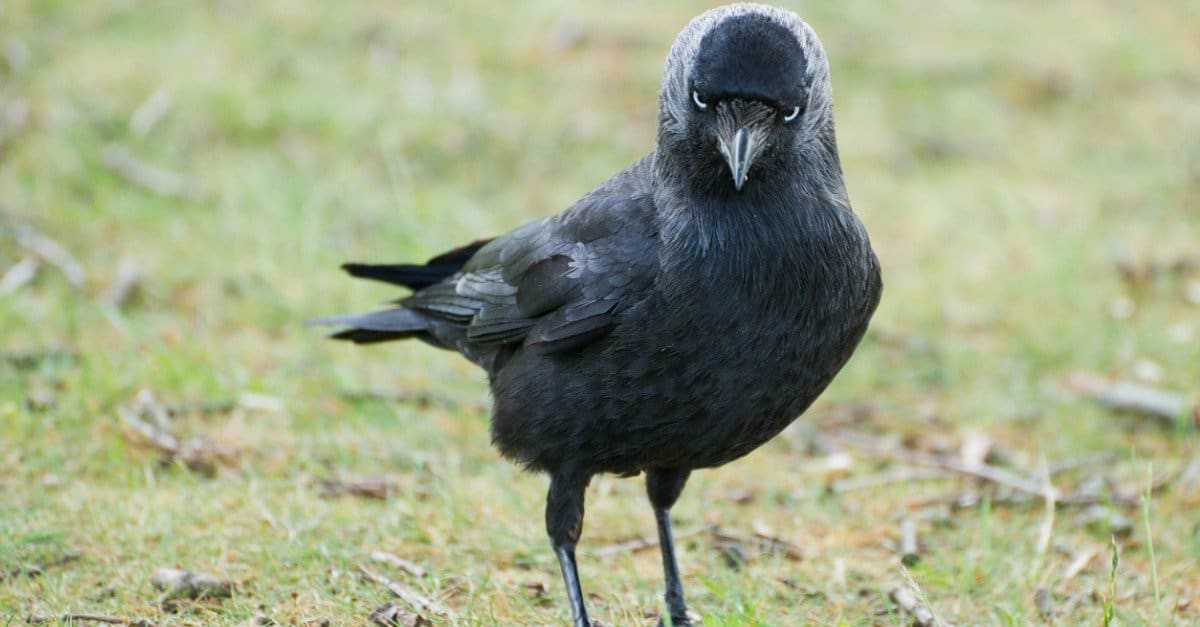Jackdaw Pictures
View all of our Jackdaw pictures in the gallery.
There are two recognized species of jackdaw: the western or Eurasian jackdaw, which can be found almost anywhere between Western Europe and Central Asia, and the Daurian jackdaw, which calls eastern Asia home. As members of the Corvid (crow) family, they are highly intelligent and sociable. They rank among the few tool users in the entire animal kingdom. They are an important piece of symbolism in many cultures, and they are attracted to shiny trinkets, which is probably why they are often caricatured in stories as thieves.
The jackdaw’s name comes from the word jack, which means “small,” and “daw,” which is an archaic British name for the bird. However, some say “jack” comes from the jackdaw’s call that sounds like a hard “tchack.”
Scientific Name
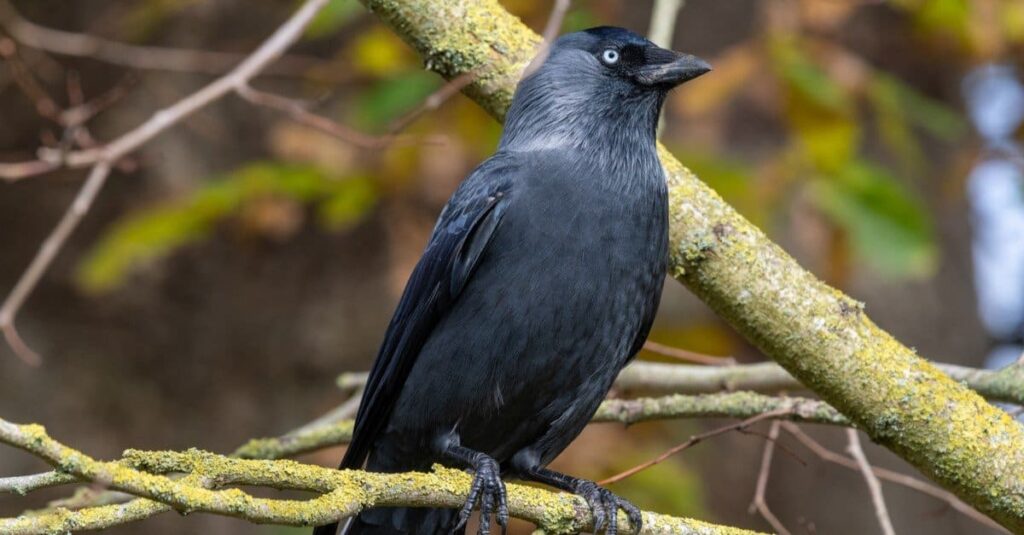
The scientific name of the western or Eurasian jackdaw species is C. monedula. Monedula is derived from a Latin word meaning money, in reference to the jackdaw’s penchant for stealing shiny trinkets. This species is found in Great Britain, western Europe, Scandinavia, northern Asia, and northern Africa. There are four subspecies: the Nordic, Western Eurasian, Eastern Eurasian, and Algerian jackdaws.
The scientific name of the Daurian jackdaw is C. dauuricus. It can be found in eastern Siberia, Mongolia, China, and Japan. The name comes from the Dauria region of eastern Russia.
Appearance
The jackdaw is the smallest member of the Corvid family, and the eastern jackdaw is slightly larger than the western one. They measure about 13 inches in height and around 8 ounces in weight.
While sporting a familiar crow-like dark plumage, the western jackdaw is most easily identified by its pale white or grey iris and the light grey nape around the head or neck. The eastern species adults have white feathers at the nape, and the iris is dark.
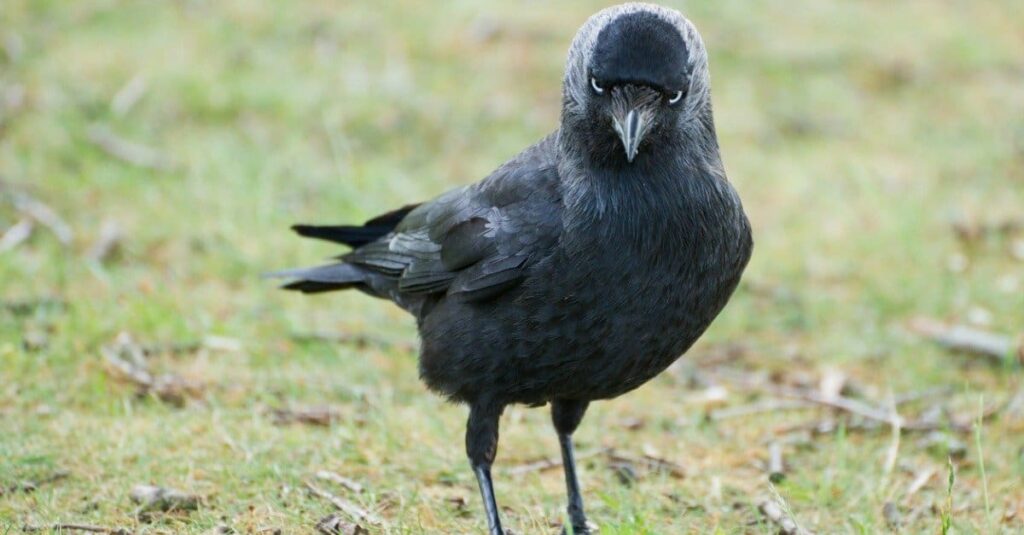
Juveniles tend to have dull plumage with brown irises and take time to achieve their adult form. They also have strong black beaks and black-colored legs.
This bird has an annual molting season in the summer and autumn when it replaces its entire plumage. Its feathers will start turning gray with age.
Behavior
The basis of jackdaw’s “society” is the mating pair, which usually bonds for life. Together the pair roosts and feeds in even larger colonies, sometimes consisting of many thousands of birds. While the colony members are almost completely unrelated to each other, they do work together to find food and resources. If one member of the colony has found an ample source of food, then it will sometimes alert other members about the location as well.
These birds make several sounds to communicate with each other. The most common is the familiar jack or chak greeting for which they are named. They also have alarm calls, mating calls, and roosting calls. The Daurian jackdaw has a more nasal sound.
As members of the Corvidae family, jackdaws are thought to be some of the most intelligent animals on the planet. They have the ability to use tools, solve problems, and perhaps even recognize individual human faces.
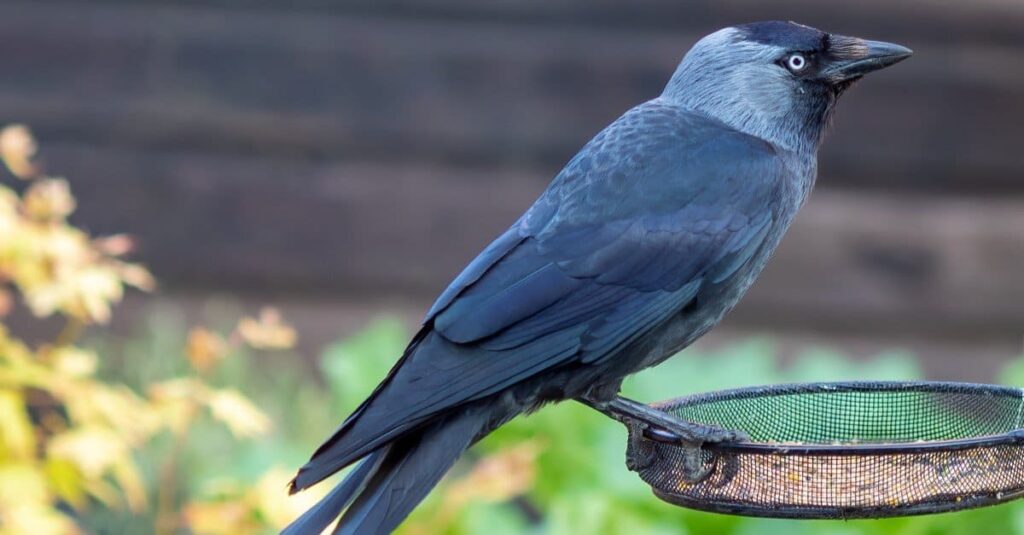
While the jackdaw should not be kept as a pet, this bird can be tamed and even taught various tricks. One of the most interesting facts is that it has the remarkable ability to mimic the human voice.
Habitat
Both species of jackdaw are normally found in farmlands, open woodlands, cliffs, and even urban habitats. Most jackdaws stay in the same place all year round, but the northernmost populations do migrate south for the winter. They can be seen flying in massive formations during the late autumn months.
Diet
This bird is a scavenging omnivore. It will eat almost anything it can find. Large colonies can be seen foraging along the ground, sometimes side by side with crows and rooks.
The jackdaw’s diet largely consists of seeds, fruits, and small invertebrates like insects, snails, and spiders. If it happens to come across abandoned carrion or untended bird eggs, then it will make a quick meal of those as well. It also has a habit of raiding garbage bins, landfill sites, and gardens.
Reproduction, Young, and Molting
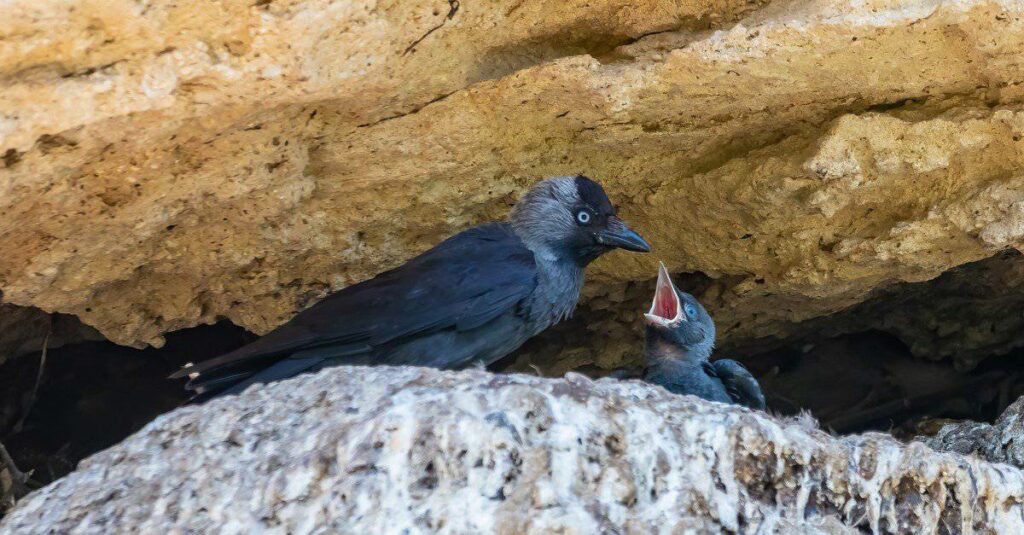
The jackdaws will create a nest in almost any kind of cavity that’s about the size of its height, including tree holes, chimneys, cliffs, attics, and buildings. The nest itself consists of an outer section lined with larger sticks and an inner section lined with wool or hair.
A male and female bird will forge a strong monogamous bond, often pairing up for life. During the annual mating season in April to July, the female will produce a brood of four to six eggs. She is responsible for most of the incubation duties, while the father is responsible for foraging all of the food.
The eggs hatch asynchronously (meaning at different times) in the general order in which they were laid. Sometimes the first chick will have already begun to fully fledge after about a month when the last chick is only just starting to emerge from its egg. However, if food is running particularly low, then the final chicks might be left to die.
This bird has an average lifespan of about five years in the wild, but it can be cut short by predators, disease, and starvation.
Predators and Threats
Highly adaptable and versatile, this bird faces few threats in its natural habitat apart from predators. It is preyed upon by birds of prey, stoats, weasels, polecats, wild and domesticated cats, and rodents. Many of these predators will steal eggs whenever they spy an opportunity, but some will prey upon the adults as well. Jackdaws will cry out for help and mob predators to drive them away.
Population and Conservation Status
It is estimated that there are somewhere between 40 million and 85 million mature individual Eurasian jackdaws in the wild. The population of the Daurian is smaller but still significant. The IUCN Red List considers both the Eurasian and Daurian jackdaws to be species of least concern.
